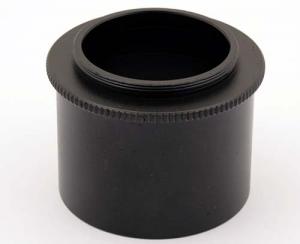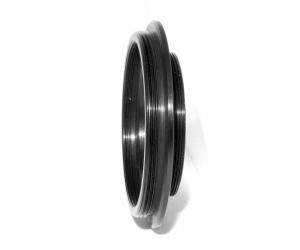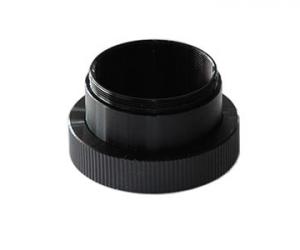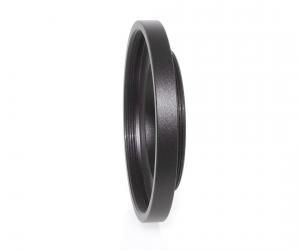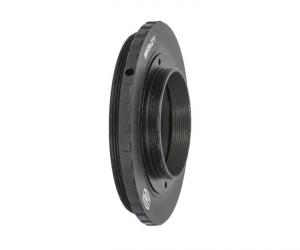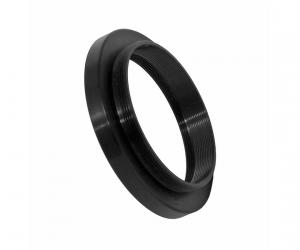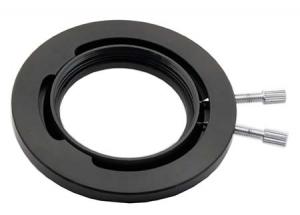- Telescopes
- Overview:
Telescopes - Achromatic Refractor
- Apochromatic Refractor
- Overview:
Apochromatic Refractor - ED Refractor - less color aberration than an achromatic
- SD APO - color free 2-element APO objective
- EDT APO - 3 element ED objective
- High End APO with 3-element APO objective - no color aberation
- Flatfield APO with flat field for Astrophotography
- All Apos and EDs from all manufacturers - large overview
- TS APO and ED from Japan with high quality optics
- Overview:
- Newtonian Telescopes
- Dobsonian Telescopes
- RC Ritchey Chretien Telescopes
- Casssegrain Telescopes
- Reflektor Telescopce with Lens Correcture
- Maksutov Cassegrain Telescopes
- GoTo Telescopes
- Solar Telescopes H-Alpha
- Overview:
- Mounts Tripods Rings Rails Power Supply ...
- Overview:
Mounts Tripods Rings Rails Power Supply ... - Mounts Equatorial with GoTo
- Mounts Equatorial without GoTo
- Mounts Azimutal with GoTo
- Mounts Azimutal without GoTo
- Mounts GoTo - Harmonic Drive
- Travel mounts for astro imaging
- Tripods Piers Polar Wedges
- Mount Control & Electronics
- Dovetail Clamps, Plates and Mount Adapters
- Tube Rings
- Power Supply
- Counterweights Balance Weights
- Mount Accessories - Other
- Overview:
- Telescope Accessories
- Overview:
Telescope Accessories - Eyepieces
- Barlows & Reducer Lenses
- Diagonal Mirrors and Prisms
- Binocular Viewers
- Finder Scopes
- Telescope Collimation and Test
- Cleaning Tools
- Transport and Storage
- Dust protection for Telescopes & Accessories
- Stray Light Protection
- Dewcaps and Heater
- Focusers, Adapters, Motorfocus
- Telescope DIY & Improvement
- Other telescope accessories
- Replacement Parts
- Overview:
- Filters
- Overview:
Filters - Color Filters and Color Filtersets
- Nebular Filters for Visual Observing
- Neutral-Density and Polfilter
- Photo Narrowband Nebular Filters
- Photo Broadband Filters
- Photo Planetary Filters
- Photo R-G-B and IR Cut Filters
- Photo - Filtersets
- Photometric Filters
- Clip Filter for DSLR Cameras
- Filter Wheels and Filterslider
- Solar Filters for white light
- Solarfilter for H-Alpha and Calcium
- Overview:
- Adaptors
- Overview:
Adaptors - Adapter 1,25" and 24,5mm
- Adapter 2"
- Adapter T2 - M42x0.75
- Adapter M48x0,75
- Adapter M54
- Adapter SC
- Adapter M63
- Adapter M68
- Adapter to other Threads
- Adapter Extensions
- Adapter camera bayonet
- Adapter Objective Filterthread
- Adapter Quick Changing , Rotation
- Adapter Eyepiece Projection
- Adapters Tilting
- Overview:
- Astrophotography and Photography
- Overview:
Astrophotography and Photography - Cooled Cameras
- Cameras without Cooling
- Deep-Sky Cameras uncooled
- Set-Offers Camera, Filter, Wheels
- Acessories for Cameras
- Travel mounts for astro imaging
- Imaging Correctors for Telescopes
- Autoguiding Cameras & Sets
- Everything for Guiding
- Focusing aids - Bahtinov mascs
- Flat Field foils and boxes
- Lenses for Cameras
- Piggyback Camera Holder
- Camera Bags, Photocases & more
- Digital Camera and Smartphone Adapter
- Other photo accessories
- Overview:
- Binoculars, Spotting Scopes, Microscopes, Range Finders
- Overview:
Binoculars, Spotting Scopes, Microscopes, Range Finders - Spotting Scopes and Acessories
- Roof Prism Binoculars
- Binoculars with Porro prisms
- Binoculars from 100mm Aperture
- Binoculars with 1,25 inch eyepieces
- TSMX APO Binoculars
- Binoculars for Astronomy
- Binoculars Hiking Bird watching
- Monoculars - Opera Binoculars
- Accessories for Binoculars
- Range Finders
- Microscopy
- Bags for Phototripods & Binoculars
- Overview:
- Phototripods and Binomounts
- Books, Software
- Overview:
Books, Software - Books for Astronomy Beginners
- Star Charts and Planispheres
- Books about our Solar System
- Observing Tips for Amateurs
- Popular Astronomy Literature
- Teaching material
- Astrophotography books
- Telescopes, Observatories, Construction
- Calendars Yearbooks
- Software, Star Charts
- Books for Microscopers
- Books Nature and Animals
- Nature Photography TimeLapse
- Overview:
- Night Vision, Magnifiers, Weather, Domes & more
- Beginner Astronomy and Gift Ideas
- Second Hand & Special Offers
- New products
Manufacturer: Lacerta
Product number: DSPRO2600C
EUR1999.90new
EUR 1.999,90
incl. 19 % VAT (DE)
The VAT indicated refers to that applicable in Germany. After logging in, the VAT amount is adjusted to the applicable VAT of the stored delivery country. Therefore, the final price may vary accordingly.
excl. 6.95 € shipping costs (DE)
more details to the shipping costs ...Please log in to calculate shipping costs to your country.
There are no reviews for this product
- Details..
- Technical data..
- In the box..
- Reviews..
- Manufacturer infos..
- Safety informations..
Lacerta DeepSkyPro2600 - cooled 26 MPixels APS-C Color Camera
Here the new sensational SONY EXMOR IMX571 chip was installed, which has almost ideal characteristics for astrophotography:Sensor specification IMX571:
Other camera features:
Software
The connection with APT, SharpCap and other control programs succeeds without problems via the Ascom driver.The included program ToupSky offers extensive functionalities and is excellent also for planetary imaging, it can display raw images also pre-debayed with correct colors (white balance).
The drivers are installed with the ToupSky software, please download Ascom and DirectShow drivers from the support folder:
Click here, scroll down to "SUPPORT" if necessary.
Astrophotographic results obtained with this camera on Astrobin
Here you can find some astrophotographs made with this camera model: Link to AstrobinGood storage is an important preventive measure against dew and also extends the service life
After use, put the camera straight into the TS Protect Case and add some silica gel. During storage, the silica gel absorbs the moisture from the camera. At the same time, the penetration of moist room air is prevented. Dry storage can even partially regenerate the small desiccant tablets in cooled cameras. Your camera or accessories are always ready for you in optimum condition. You can find the silica gel and the case in our product recommendations.The cameras are not airtight, so if the camera remains on the telescope, it is exposed to moisture. The small amount of desiccant in the camera can protect the sensor and the inside of the protective glass from moisture for the duration of the exposure, but not for days on end. Moisture problems can be the result. A simple trick is to stretch a plastic bag around the focuser to which the camera is attached so that no air can get in. Silica gel is placed in a small cloth bag inside the plastic bag. This will also create a "dry climate zone" for the camera on the telescope. This allows you to leave the camera on the telescope for a few days for an imaging session lasting several days.
In the medium and long term, however, this is no substitute for proper storage in an airtight case with silica gel.
| Sensor: | Sony Exmor IMX571 Color |
| Technology: | CMOS |
| Exposure: | Backside illumination |
| Pixel count: | 26 MPixel |
| Pixel arrangement: | 6224x4168 pixels |
| Pixel size: | 3.76 µm x 3.76 µm |
| Sensor size: | 23.48 mm x 15.67 mm - diagonal 28.4 mm |
| Exposure times: | 0.1 ms to 3600 s |
| Bayer matrix: | RGGB |
| Binning modes: | 1x1, 2x2, 3x3 |
| Readout speeds: | 6.8 fps @6224x4168(16bit), 14 fps @6224x4168, 37 fps @3104x2048, 110 fps @2064x1388 |
| A/D converter: | 16 bit native |
| Readout noise: | 0.7-3.5 e- (depending on gain) |
| Dark current: | 0.0005 e- (per pixel and second, at -20 °C) |
| Cooling: | Peltier, two-stage, up to 42 °C below ambient temperature |
| Entry window: | IR cut filter, heated |
| Camera connection electrical: | USB3 |
| USB Hub: | 2x USB2 |
| Driver: | ASCOM |
| Software included: | ToupSky |
| Telescope connection: | M48x0.75 female thread |
| Working distance: | 17.5 mm |
Astrophotographic results obtained with this camera on Astrobin
Here you can find some astrophotographs made with this camera model: Link to Astrobin| Manufacturer / Importeur: | Lacerta GmbH |
| Street: | Schönbrunnerstraße 96 |
| ZIP / City: | 1050 Wien |
| Country: | Austria |
| Telefon number: | +43 1 3889998 |
| Email: | teleskopaustria@gmail.com |
| Website: | www.teleskop-austria.at |
Safety informations: PDF Download
Recommended accessories
Adaptors
TS-Optics Focal Adapter from 2 Inch to T2 (M42x0,75)
EUR 29,90RRP EUR 34,90you save 14.3% (EUR 5,00)
TS-Optics T2 Focal Adaptor for Skywatcher Focusers with female M54x1 Thread
EUR 34,00RRP EUR 42,00you save 19% (EUR 8,00)
Photo Acessories
Reviews


















